Rhythm
- System of organized sound and silence
- Rhythmic notation is based upon proportional relationships
Pulse – Regular beating of the arteries
Tempo – speed at which something is performed
Metronome – Device that beats a pulse at a regular tempo
Beat
- The pulse in music
We typically vocalize numbers to count beats.

Measures
Adding measure lines organizes the beats into segments called measures.

Notice a measure line “resets” the counting of the beats.
Meter – A system of strong and weak beats
Conducting – use of gesture to represent musical sounds
Fundamental Meter Types
Duple Meter
Two beats occurring per measure:
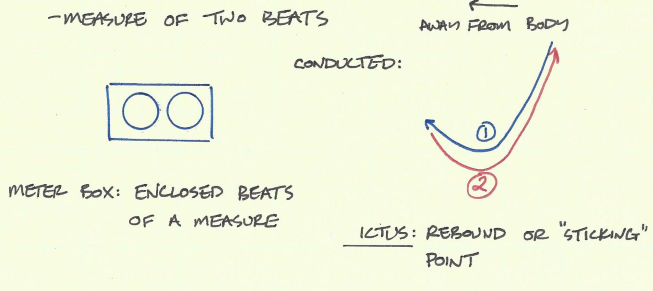
Triple Meter
Three beats occurring per measure:

Quadruple Meter
Four beats occurring per measure:
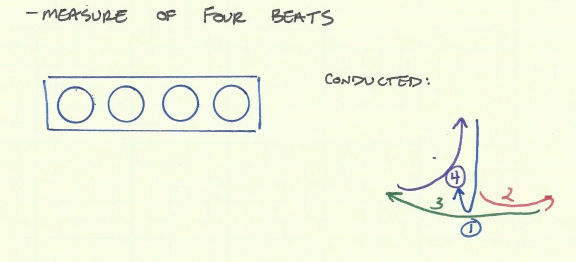
Dividing the Beat
Simple Meter – the base division of the beat is two.
Simple Division
Beat is divided into two equal parts.

Vocalized (Traditional American System): 1 + 2 + 3 + 4 +
Simple Subdivision
Beat is divided into four equal parts.

Vocalized (Traditional American System): 1 E + A 2 E + A 3 E + A 4 E + A
Practice the transition:

Compound Meter – the base division of the beat is three.
Compound Division
Beat is divided into three equal parts.

Vocalized (Traditional American System): 1 + A 2 + A 3 + A 4 + A
Compound Subdivision
Beat is divided into six equal parts.

Vocalized (modified Traditional American System): 1 E + Ta A Ta 2 E + Ta A Ta 3 E + Ta A Ta 4 E + Ta A Ta
Microdivision – any division beyond subdivision
Simple/Compound Relation
- The length of the division stays the same unless notated.
- The beat in compound meter is longer by a 3:2 ratio.
Practice the transition:
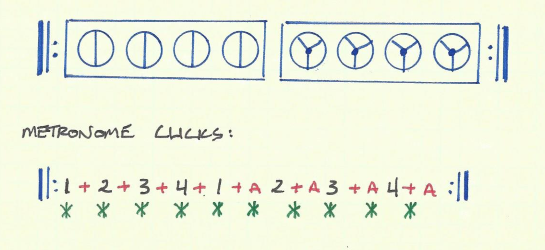
Borrowed Meter
- It is common to borrow from compound meter. In this case, the beat remains the same, which the divisions become shorter in length.
- “Triplets”
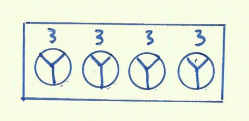
Vocalized (Traditional American System): 1 + A 2 + A 3 + A 4 + A
Practice the transition:
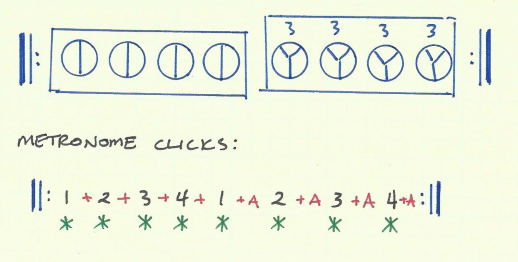

Leave a Reply